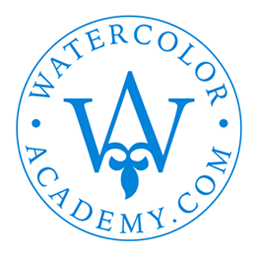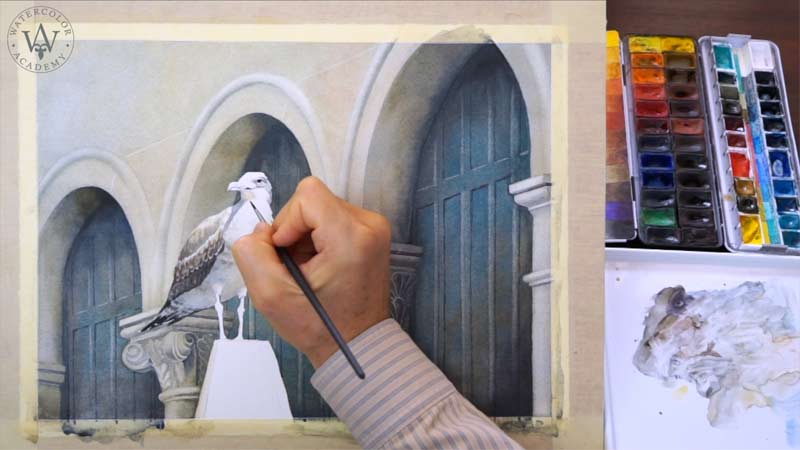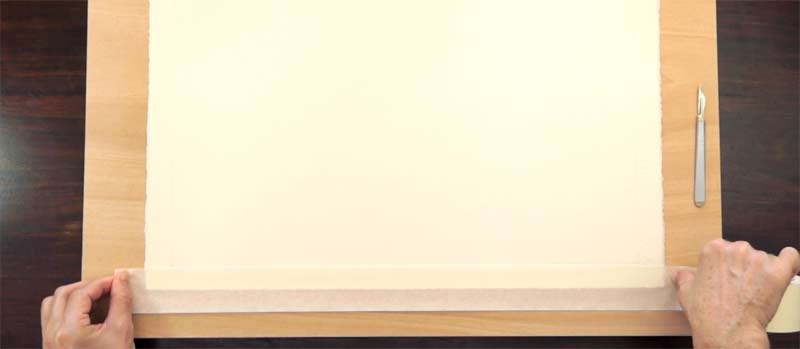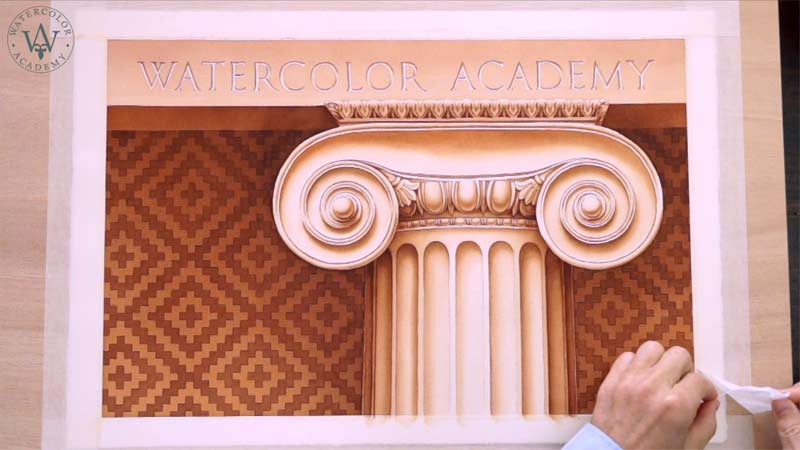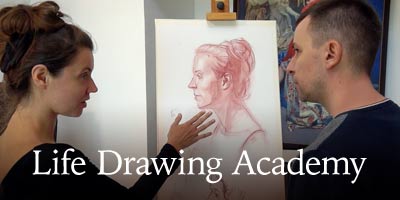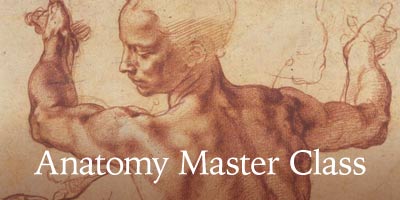Gluing Watercolor Paper with Paper Tape
Article by Vladimir London, Watercolor Academy tutor
This is an inexpensive and quite simple methods of attaching watercolor paper to a board
The simplest and fastest way is by using self-adhesive masking tape over the edges of the sheet. The tape will not stick to wet paper and board and therefore has to be applied on a dry surface. This method is good for holding paper in place. However, it won't prevent paper from buckling when wet. Also, when the edges of the paper become wet, the masking tape might unstick and the paint will flow under it.
Another way of fixing paper is with gummed paper tape. Traditional two-inch brown packaging tape will do. It is better to pre-cut the four pieces of paper tape about four inches longer than the paper sides with scissors, so later you won't be handling the roll with wet fingers while wet watercolor paper dries unnecessary. For this method, the plywood board has to be thick enough (about half an inch) not to bend and bigger than the paper. Thin plywood might bend when the drying paper is contracting.
First, the surface of the board is moistened. Then, water is applied on both sides of the paper with a wide, flat brush or a natural sponge in several coats. It takes a few minutes for 300gsm paper to expand fully. Heavier paper might take up to ten or fifteen minutes. Hot-pressed papers can be soaked in water longer to make their surface more accepting of the paint. There is a fine line between wetting and soaking paper. You need to avoid over-soaking or it will dilute paper sizing. When this happens, the paper becomes non-springy and its surface absorbs paint faster and deeper, making painting process more challenging and end appearance of an artwork duller. Let excess water run down. The paper surface has to be wet, but free of puddles and big drops, when placed on the moist board. Excess water can be absorbed with a sponge. It is important to make sure that no are puddles left both on the top surface and underneath. Work the surface with a clean sponge to draw surplus water out.
It is time to stick the watercolor paper with the tape. Wet a pre-cut piece of the tape by dipping it into the water or spraying with an atomizer. Place the tape along the long side of paper, overlapping about half of its width with the paper's edge, and press the tape down. When wetting gummed tape, do not soak it because the glue can be washed away. Also, make sure that no drops from the tape fall on the painting surface. Such drops will prevent the paint from laying evenly and spoil the final artwork. Any accidental drops of water from the tape have to be wiped immediately with a clean sponge.
I start gluing with one of the longer sides of the paper, then a shorter one, followed by a long side once again, to finish with the remaining short side. This whole process has to be done in one go without interruptions. Instead of handling the wet gummed tape over the board, I rotate the board 180 degrees (halfway) after two of the four sides are glued. This is to turn the unglued sides closer to the bucket of water where the tape is wetted. Do not use the same sponge to absorb the excess water that comes from underneath the paper tape to wipe the paper surface. A sponge contaminated with glue will spoil the working area of paper. Leave the board horizontally for few hours until the paper and tape are completely dry.
The biggest disadvantage of this method is that it doesn't work every time. Sometimes tape won't stick to the watercolor paper when it dries, and you have to start from the beginning. Wetting paper again will wash away more sizing, so experimenting with it indefinitely is not recommended. To avoid this, you can tape the paper down and staple the edges of paper to the board through the tape.
You also need to know how to take your finished watercolor artwork off the board. When you done with a piece and the paper is dry, you can cut the brown tape with a scalpel along the watercolor paper's edge. This way, you can keep the remaining brown tape attached to the artwork, as it will reinforce its edge and be hidden by a frame mount. Alternatively, you may take the gummed tape by wetting it accurately, leaving for a few minutes for the glue to soften up, and then take off the tape by simply pulling it upwards and sideways away from the paper, so no drops of glue can fall on the panting surface. Clean up the board with a palette knife to remove the glue and finish cleaning it with a wet sponge afterwards.
Another way of stretching wet paper is by gluing it to a wooden panel with PVA glue along its four edges. The board size must be one inch smaller than the paper size, so the half-an-inch margins can be folded and glued to the side surfaces of the panel. When the paper dries, it shrinks. The PVA glue holds it well and under tension the surface of paper becomes perfectly flat and stretched. This tension prevents the paper from buckling when wet. I use this method for stretching big papers and it works every time. The advantage of a strong glue is also its disadvantage when it comes to taking the artwork off the panel. PVA does not dilute and so the artwork has to be cut off with a scalpel. The remaining strips of watercolor paper can be left on. Next time, I will just glue new paper on top.
If gluing doesn't sound clean and easy, there are other ways to stretch wet paper.
To learn how to paint in watercolor, enroll now
Watercolor Academy Online Course
A self-study, self-paced course where you can learn how to paint in watercolor by watching video lessons and doing assignments
- Unlimited access to 80 watercolor painting video lessons
- Lifetime membership without deadlines
- Unlimited support from the Academy tutors
- Constructive critique of your artworks
- Member access to the Academy's Art community
- Place in the Academy's Students Gallery
- Exclusive members-only newsletter and bonuses
- Watercolor Academy Diploma of Excellence in your name
One-time payment - Lifetime membership
$297 USD
ENROLL NOW
Personal Tutoring online + Online Course
One-to-one, unlimited and custom-tailored to your skills and needs Personal Tutoring by the Watercolor Academy teachers
- Everything in Online Course, plus:
- Dedicated team of art tutors
- Assessment of your current level of art skills
- Personalized curriculum tailored to your skills and goals
- Up to 100 art tasks with by-task assessment
- Unlimited one-to-one personal coaching with detailed per-task instructions and feedback
- Artwork critiques and results-oriented guidance
One-time payment - Lifetime membership
$997 USD
ENROLL NOW
